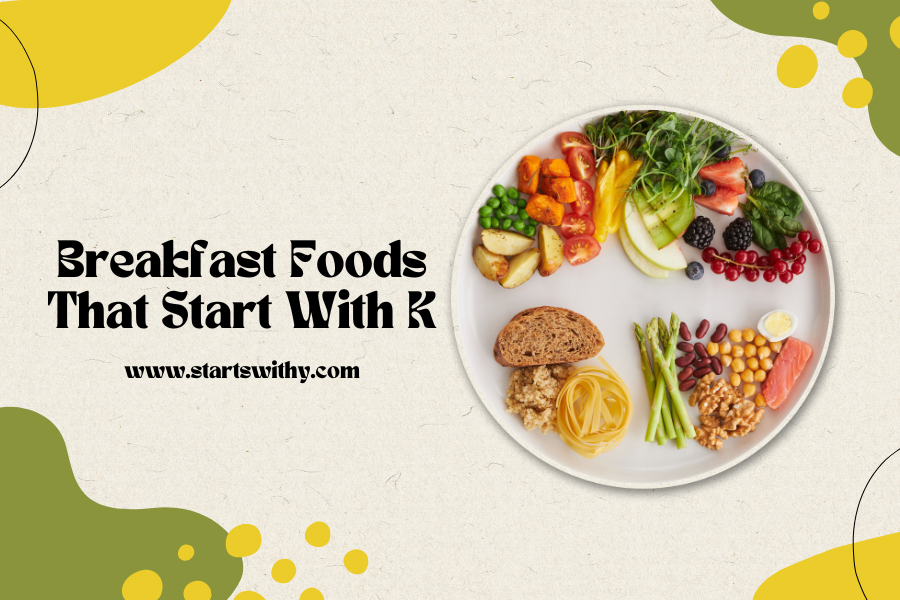Kissing the morning with kindness and kindling our spirits, breakfast has an uncanny knack for setting the keynote for the day ahead. Within this kaleidoscope of culinary choices, the letter ‘K’ emerges, showcasing a kitchen full of kingly delights. From the well-known kiss of Kellogg’s cereals to the traditional kick of the Korean Kimchi, ‘K’ knits together a mix of both commonplace and keenly unique breakfast items.
This article is set to kindle your curiosity, offering a kaleidoscopic view into the world of ‘K’-initiated breakfast gems. Whether you’re keen on keeping your breakfast routine lively or simply kindling a newfound appreciation for the variety that exists, let’s embark on this knowledge-rich journey, celebrating the kudos-worthy breakfast foods introduced by the kaleidoscopic letter “K”.
Breakfast Foods That Start With The Letter K
Kicking off the morning with delightful dishes that begin with the letter ‘K’ promises a kaleidoscope of flavors, traditions, and textures. From the cherished classics of the West to the ancient staples of the East, ‘K’ brings forth a kernel of deliciousness to our breakfast plates. Let’s embark on this knowledgeable journey through breakfast foods beginning with this kinetic letter and see how they can kindle our day’s spirit.
1. Kellogg’s Cereals
Origin: United States, founded by Will Keith Kellogg.
Varieties: Corn Flakes, Rice Krispies, Special K, and many more.
Preparation: Typically served with milk or yogurt, and perhaps a sprinkle of fresh fruits or nuts.
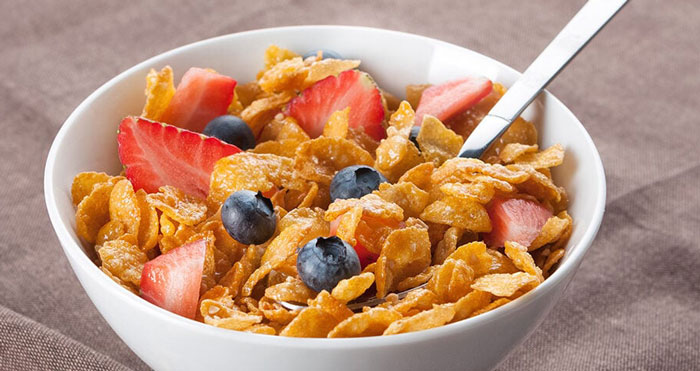
2. Kedgeree
Origin: United Kingdom, but influenced by Indian cuisine.
Preparation: A dish made of cooked, flaked fish (often smoked haddock), boiled rice, parsley, hard-boiled eggs, curry powder, and butter or cream.
Cultural Significance: A popular breakfast dish during Victorian times, bridging British and Indian culinary traditions.
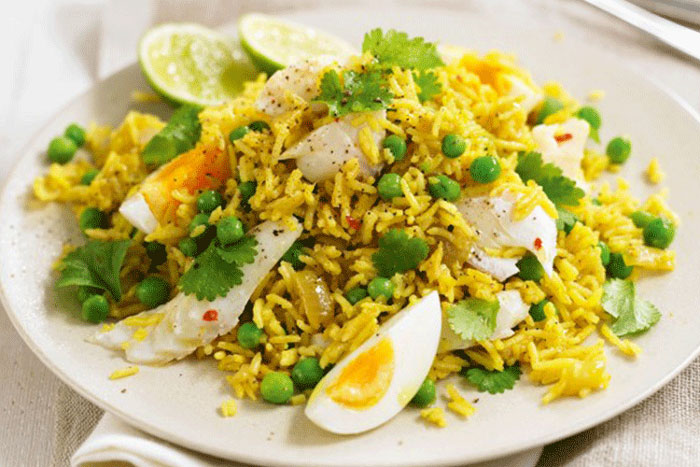
3. Kasha
Origin: Eastern Europe.
Preparation: A type of porridge made from roasted buckwheat groats.
Health Benefits: Gluten-free, high in fiber, and a good source of essential nutrients.
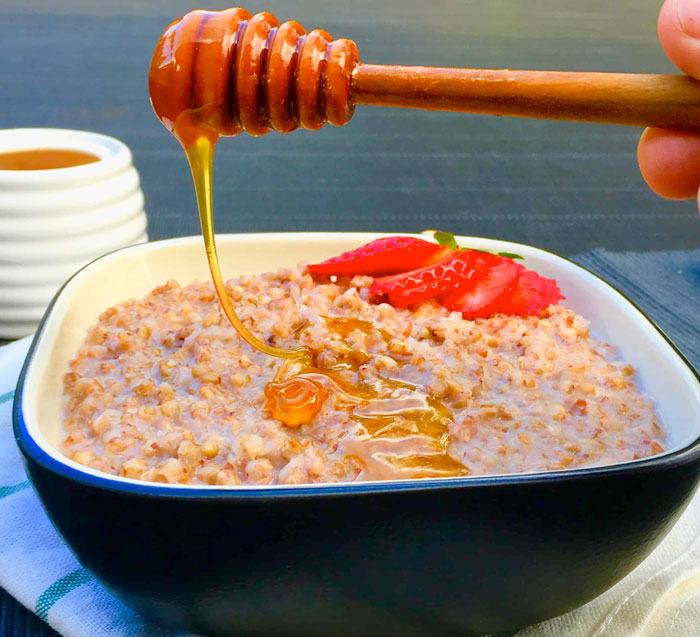
4. Kiwi
Origin: Native to China but named after the kiwi bird when cultivated in New Zealand.
Characteristics: A small fruit with a fuzzy exterior and vibrant green flesh speckled with tiny black seeds.
Benefits: Packed with vitamin C, vitamin K, and fiber.
Usage: Sliced and added to fruit salads, smoothies, or yogurt bowls.
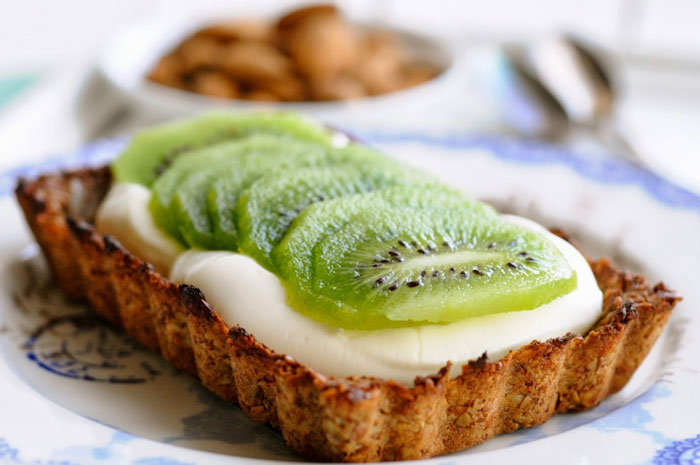
5. Kipper
Origin: United Kingdom.
Preparation: Whole herring, split in a butterfly fashion from tail to head, gutted, salted or pickled, and cold-smoked.
Serving Suggestions: Often grilled and served with eggs and toast for breakfast.
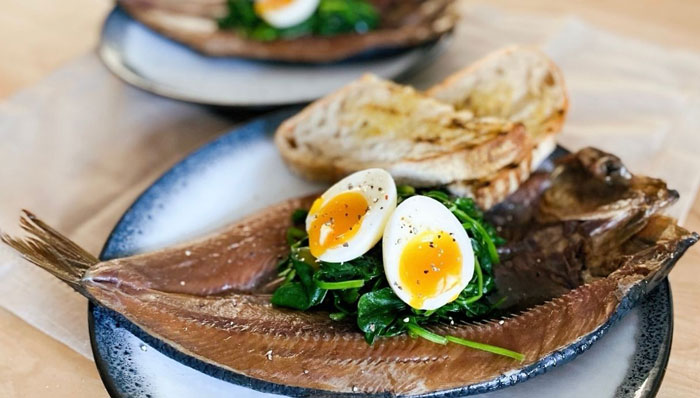
6. Kringle
Origin: Denmark.
Preparation: An oval-shaped, butter-layered Danish pastry filled with various ingredients such as fruits, nuts, or chocolate.
Serving Suggestions: Perfect alongside morning coffee or tea.

7. Koulourakia
Origin: Greece.
Preparation: A hand-shaped, egg-glazed cookie, often with a twist shape, subtly sweet with a hint of vanilla or citrus.
Occasions: Traditionally associated with Greek Easter but can be enjoyed any time of year.

8. Knäckebröd (Crispbread)
Origin: Sweden.
Preparation: Dry and crisp, these breads are often made from rye and come in large rounds.
Pairings: Ideal with butter, cheese, or any spread of your choice. A staple in Scandinavian breakfasts.
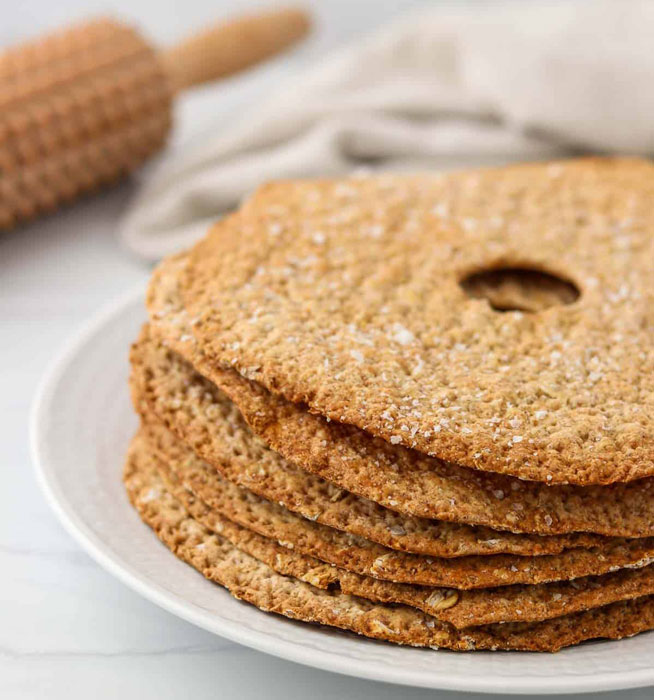
9. Kheer
Origin: Indian subcontinent.
Preparation: A rice pudding made by boiling rice with milk and sugar, flavored with cardamom, raisins, saffron, and nuts.
Breakfast Variant: While often a dessert, a less sweetened version can be a wholesome breakfast.
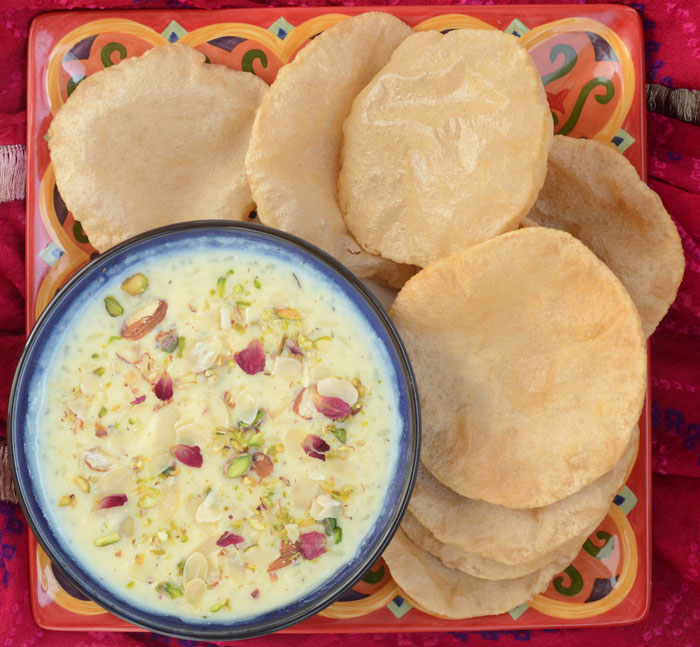
10. Kolache
Origin: Central Europe, but also popular in parts of the United States.
Preparation: A type of pastry filled with fruits, poppy seed paste, or even sausage and cheese.
Serving Suggestions: Best enjoyed fresh from the oven with a cup of coffee.

11. Kombucha
Origin: Believed to originate from Northeast China.
Characteristics: A fermented, slightly alcoholic, effervescent black or green tea drink.
Benefits: Probiotic-rich, it’s believed to aid digestion and promote gut health.
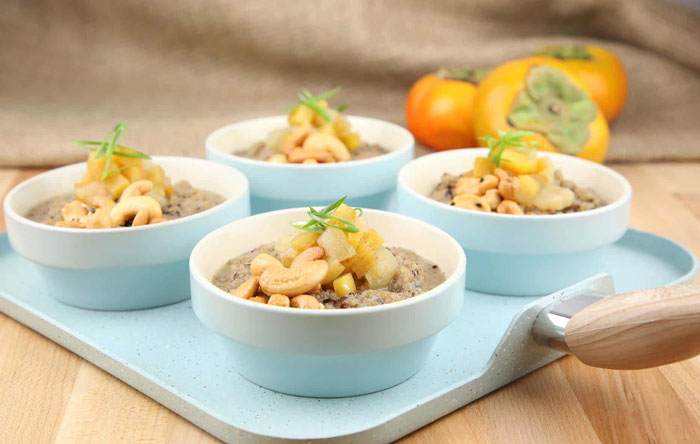
12. Kale Omelette
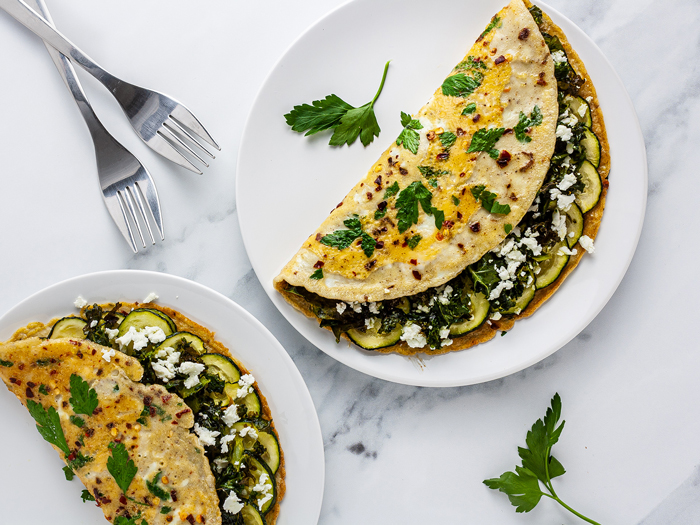
Origin: Kale omelettes trace their roots back to ancient Rome, where eggs were readily available and leafy greens like kale were prized for their nutritional value. Over time, the dish spread throughout Europe and eventually made its way to America, where it became a popular breakfast option, especially among health-conscious individuals.
Description: A kale omelette is a vibrant and flavorful way to start your day. Tender kale leaves are sautéed with garlic and olive oil until wilted, then whisked into beaten eggs along with your favorite cheeses, herbs, and spices. The mixture is then cooked in a pan until fluffy and golden. The result is a protein-packed omelet bursting with the earthy sweetness of kale and the comforting richness of eggs.
Breakfast Use: This versatile dish can be enjoyed in countless ways. For a classic take, serve it alongside toast and butter. Get creative by adding chopped vegetables like tomatoes, peppers, or onions to the sauteed kale. Feeling adventurous? Crumble some feta cheese or top the omelette with a dollop of Greek yogurt for a tangy twist. With its impressive nutritional profile, a kale omelette makes a perfect breakfast for growing children, providing them with essential vitamins, minerals, and protein to fuel their day.
Did you know? One cup of cooked kale contains over 200% of your daily recommended intake of Vitamin K, crucial for bone health and blood clotting.
13. Kashi Cereal
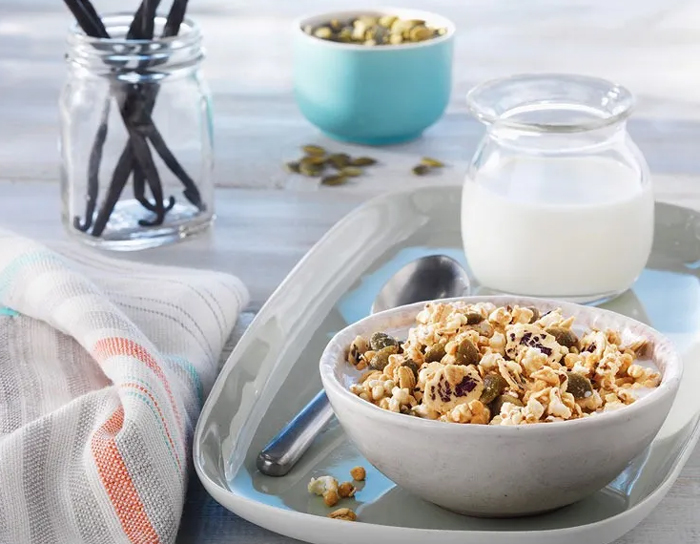
Origin: Kashi cereals were born in the 1980s in California, USA, inspired by the natural and wholesome foods movement. Founder John Bryant sought to create breakfast cereals that were not only delicious but also packed with whole grains, nuts, and seeds, offering a healthier alternative to sugary options.
Description: Kashi cereals come in a vast array of varieties, each boasting unique textures and flavor combinations. From the crunchy clusters of Honey Almond Crunch to the chewy granola of GoLean Berry Burst, there’s a Kashi cereal to tantalize every taste bud. Many varieties are packed with whole grains like oats, barley, and quinoa, offering sustained energy throughout the morning. Additionally, nuts and seeds provide healthy fats, protein, and essential nutrients, making Kashi a well-rounded breakfast choice.
Breakfast Use: Beyond the traditional bowl and milk, Kashi cereals can be incorporated into various breakfast creations. Sprinkle them over yogurt parfait for added crunch and texture. Use them as a topping for smoothies or overnight oats. Get creative and bake them into muffins or pancakes for a delightful twist. With their versatility and nutrient-rich composition, Kashi cereals make a satisfying and healthy breakfast option for children and adults alike.
Did you know? Some Kashi cereals contain ancient grains like spelt and kamut, known for their higher protein content and potentially easier digestibility compared to wheat.
14. Kebab

Origin: Kebabs, skewered and grilled meats, have ancient roots, tracing back to nomadic cultures in the Middle East and Central Asia. Over time, the cooking method and ingredients used in kebabs varied greatly across regions, giving rise to countless delicious variations. Today, kebabs are enjoyed worldwide, including as a flavorful breakfast option in many cultures.
Description: Breakfast kebabs typically feature smaller, bite-sized pieces of meat like chicken, lamb, or beef, marinated in herbs and spices and grilled to juicy perfection. They can be served skewered or incorporated into dishes like wraps, sandwiches, or bowls. Common accompaniments include fresh vegetables, yogurt sauces, and flatbreads like pita or naan. The resulting dish is a symphony of textures and flavors, offering a savory and satisfying start to the day.
Breakfast Use: Kebabs are a delightful way to introduce children to different spices and culinary traditions. Experiment with different marinades and meats to find your family’s favorites. Serve them alongside chopped vegetables for a balanced meal. Get creative and use kebab leftovers to make breakfast wraps or salads the next day. With their endless possibilities and cultural significance, kebabs make a unique and flavorful breakfast option for adventurous eaters.
Did you know? In Turkey, “kahvaltı” refers to a large breakfast spread often featuring various kebab varieties alongside cheeses, olives, breads, and jams.
15. Kelloggs Cornflakes
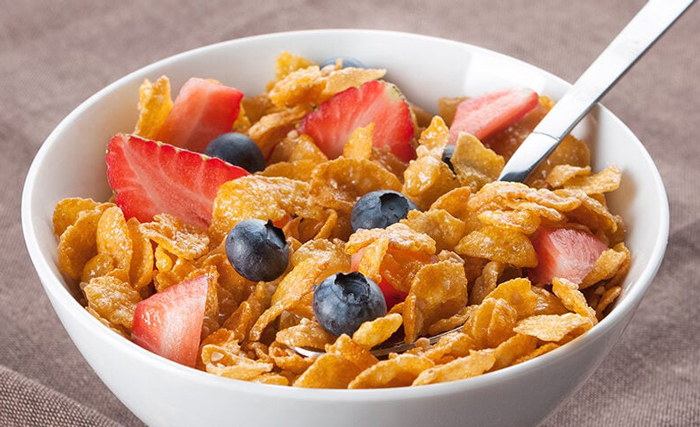
Origin: Born in 1906, Kelloggs Cornflakes were the brainchild of Dr. John Harvey Kellogg, a health advocate, and his brother Will Keith Kellogg. Seeking a healthy breakfast alternative, they accidentally flaked cooked corn, creating a light and crispy cereal that revolutionized breakfast choices. Today, Kelloggs Cornflakes remain a beloved American staple, enjoyed by generations.
Description: Each golden flake of Kelloggs Cornflakes boasts a light, airy texture and a naturally sweet corn flavor. They’re fortified with essential vitamins and minerals like iron, thiamine, and riboflavin, making them a nutritious addition to any breakfast. Whether enjoyed plain with milk or dressed up with fruit and nuts, Kelloggs Cornflakes offer a simple yet satisfying way to start the day.
Breakfast Use: This versatile cereal shines in both classic and creative breakfast creations. For a quick and easy option, pour milk over your desired amount of flakes and enjoy. Get creative by adding sliced bananas, strawberries, or a drizzle of honey for a touch of sweetness. Sprinkle them over yogurt parfaits for extra crunch. Feeling adventurous? Bake them into cookies or muffins for a fun and delicious twist on a breakfast favorite. With their timeless appeal and nutritional value, Kelloggs Cornflakes remain a reliable and tasty choice for families on the go.
Did you know? According to the Kelloggs Company, over 2 billion bowls of Kelloggs Cornflakes are consumed around the world each year!
16. Ketchup
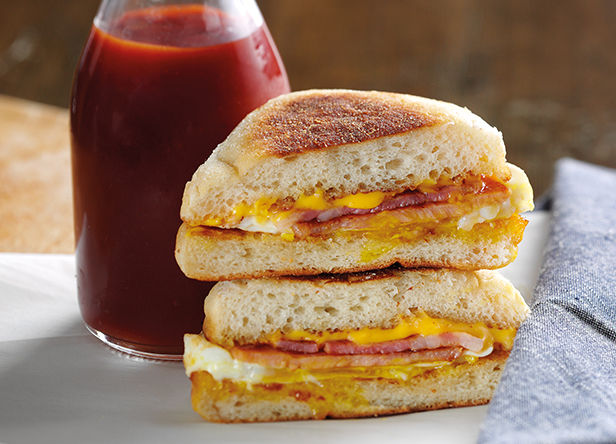
Origin: While the exact origin of ketchup is debated, its roots can be traced back to China, where similar tomato-based condiments existed centuries ago. Over time, the recipe evolved and traveled, arriving in Europe and eventually North America, where it was initially paired with fish and meat dishes. Today, ketchup reigns supreme as a burger and fries companion, but it can also hold surprising breakfast potential.
Description: The vibrant red hues and tangy sweetness of ketchup are all too familiar. However, beyond its classic use, ketchup can bring a unique twist to breakfast. Its tomato base offers a surprising source of vitamins A and C, while the sweetness adds a playful touch to savory dishes.
Breakfast Use: Though unconventional, ketchup can be a fun and flavorful addition to breakfast creations. Experiment with savory scrambles incorporating diced tomatoes and a dollop of ketchup. Whip up ketchup-infused deviled eggs for a tangy twist on a classic. Get creative and drizzle ketchup over grilled cheese sandwiches or omelets for a sweet and savory surprise. Remember, a little goes a long way, so encourage moderation and exploration with this unexpected breakfast condiment.
Did you know? The largest ketchup bottle ever created held 5,700 gallons!
17. Kettle Chips
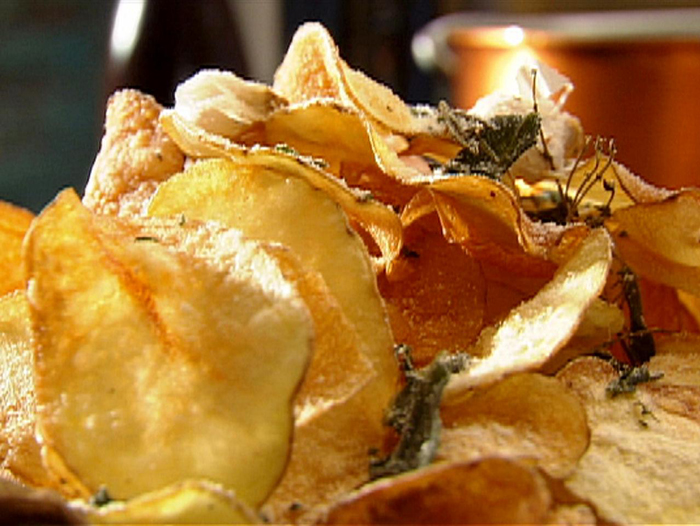
Origin: Kettle Chips, with their signature kettle-cooked method and bold flavors, were born in 1978 in Massachusetts, USA. Founder Jim Hale started by hand-cooking small batches of potato chips in copper kettles, resulting in a uniquely thick and crunchy texture. Today, Kettle Chips offer a wide variety of flavors, from classic sea salt to adventurous options like jalapeño lime and buffalo blue, making them a popular snack enjoyed around the globe.
Description: Each Kettle Chip boasts a satisfyingly thick and airy texture, achieved through the slow and steady kettle-cooking process. This method concentrates the potato flavor, creating a more robust and nuanced taste experience compared to regular chips. Kettle Chips come in a range of flavors, catering to both classic and adventurous palates.
Breakfast Use: While typically considered a snack, Kettle Chips can add a fun and crunchy element to breakfast creations. Crumble them over yogurt parfaits or oatmeal for added texture and a touch of saltiness. Sprinkle them over avocado toast for a satisfying savory crunch. Feeling adventurous? Experiment with dipping them in hummus or guacamole for a protein-rich breakfast twist. Remember, portion control is key, so encourage mindful snacking and limit the serving size for a balanced breakfast.
Did you know? Kettle Chips uses real potatoes and never adds artificial flavors or preservatives to their products.
18. Kielbasa
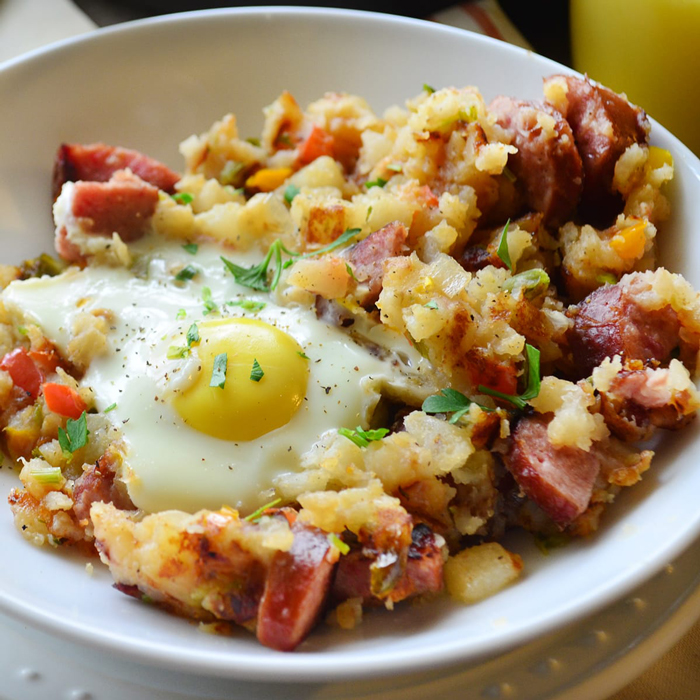
Origin: Kielbasa, a pork sausage with Polish roots, boasts a rich history dating back to the 14th century. Its name likely derives from the word “kiła,” meaning “gut,” referring to the casings used for the sausage. Over time, kielbasa variations spread across Eastern Europe and beyond, each region adding its own unique twist to the recipe. Today, kielbasa remains a beloved breakfast staple in many cultures, offering a burst of savory flavor to the morning table.
Description: Available in various thicknesses and flavors, kielbasa typically features coarsely ground pork seasoned with garlic, salt, pepper, and other spices. Its smoky aroma and juicy texture are hallmarks of its culinary appeal. Whether pan-fried, grilled, or baked, kielbasa adds a hearty touch to any breakfast platter.
Breakfast Use: This versatile sausage lends itself to countless breakfast creations. Dice it up and scramble it with eggs and veggies for a protein-packed omelet. Slice it and pile it onto toasted English muffins for a satisfying open-faced sandwich. Get creative and crumble it over pancakes or waffles for a delightful savory-sweet contrast. Remember, moderation is key when it comes to sausage, so encourage balanced portions alongside fruits and whole grains for a complete breakfast.
Did you know? In Poland, over 200 different varieties of kielbasa exist, each region boasting its own unique spice blend and preparation method.
19. Kumquats

Origin: These bite-sized citrus gems, native to Southeast Asia, were introduced to Europe in the 19th century, eventually making their way to North America. Unlike other citrus fruits, kumquats boast the unique feature of having an edible peel, making them a delightful and convenient snack or breakfast addition.
Description: Kumquats, resembling miniature oranges, burst with a sweet and tangy flavor. Their edible rind, ranging from smooth to slightly fuzzy, offers a subtle sweetness and a delightful hint of bitterness. Inside, the juicy flesh, segmented like other citrus fruits, provides a refreshing burst of tartness.
Breakfast Use: These versatile fruits add a bright and unexpected touch to breakfast menus. Slice them up and add them to yogurt parfaits for a pop of flavor and color. Top oatmeal with fresh kumquats or their marmalade for a sweet and tangy twist. Get creative and use them as a healthy and vibrant garnish for pancakes or waffles. Remember, kumquats are a good source of Vitamin C and antioxidants, making them a nutritious addition to any breakfast spread.
Did you know? The name “kumquat” likely comes from the Cantonese word “gam-gwat,” meaning “golden orange.”
20. Krunch
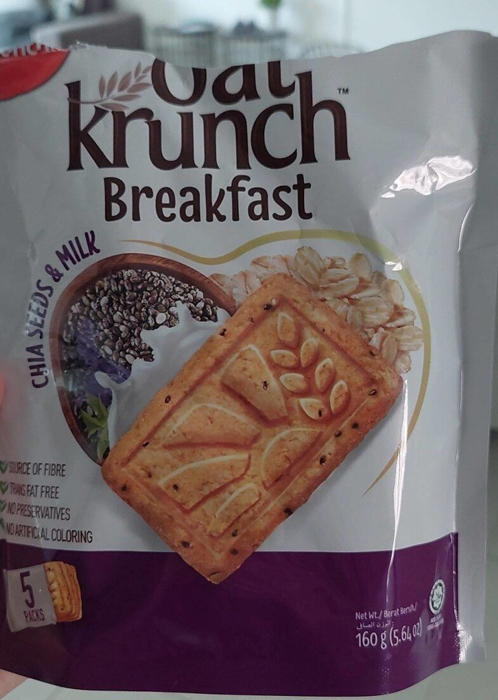
Origin: While the specific cereal you mentioned requires further information, the word “krunch” itself evokes a world of breakfast possibilities, each offering a unique combination of textures and flavors. From classic cornflakes and rice puffs to granola clusters and nut-infused bites, the world of crunchy breakfast cereals is vast and exciting for young taste buds.
Description: Whether you prefer the light and airy crunch of puffed grains or the satisfyingly dense chew of granola clusters, there’s a crunchy cereal out there for everyone. Some are fortified with essential vitamins and minerals, while others boast added fiber or protein, offering options to cater to various dietary needs and preferences.
Breakfast Use: Beyond the classic bowl and milk routine, explore the endless possibilities of crunchy cereals. Sprinkle them over smoothies or yogurt parfaits for extra texture and flavor. Crumble them over fruit salad for a delightful sweet and crunchy contrast. Get creative and use them as a base for homemade breakfast bars or cookies, offering a fun and delicious way to enjoy your favorite crunch throughout the day. Remember, moderation is key, so encourage balanced portions alongside fruits and milk for a complete and satisfying breakfast.
Did you know? The average American consumes over 17 pounds of cereal each year!
List of Breakfast Foods Starting with K
| Kahlua | Kaki | Kale |
| Kale Omelette | Kashi Cereal | Katogo |
| Kebab | Kedgeree | Kellogg’S Cereal |
| Kelloggs Cornflakes | Kelp | Ketchup |
| Kettle Chips | Khaman | Kielbasa |
| Kimchi | Kippers | Kiribath |
| Kiwi | Kiwi Fruit | Kix Cereal |
| Kokosbrood | Kolache | Krave Cereal |
| Kringle | Krispy Creme | Krunch |
| Kulcha | Kulich | Kumquats |
Conclusion
Starting the day with breakfast foods that begin with the letter ‘K’ is akin to embracing a world of varied tastes, textures, and traditions. From the comforting simplicity of kasha to the delightful complexities of a kringle, there’s a ‘K’ breakfast out there to cater to every palate. As mornings set the tone for the day ahead, incorporating these diverse ‘K’ foods can lead to an invigorating start, ensuring that the rest of the day unfolds with the same kinetic energy. Remember, a king-sized breakfast can lead to a day filled with kudos!
Breakfast Foods That Start With
A | B | C | D | E | F | G | H | I | J | K | L | M | N | O | P | Q | R | S | T | U | V | W | X | Y | Z
